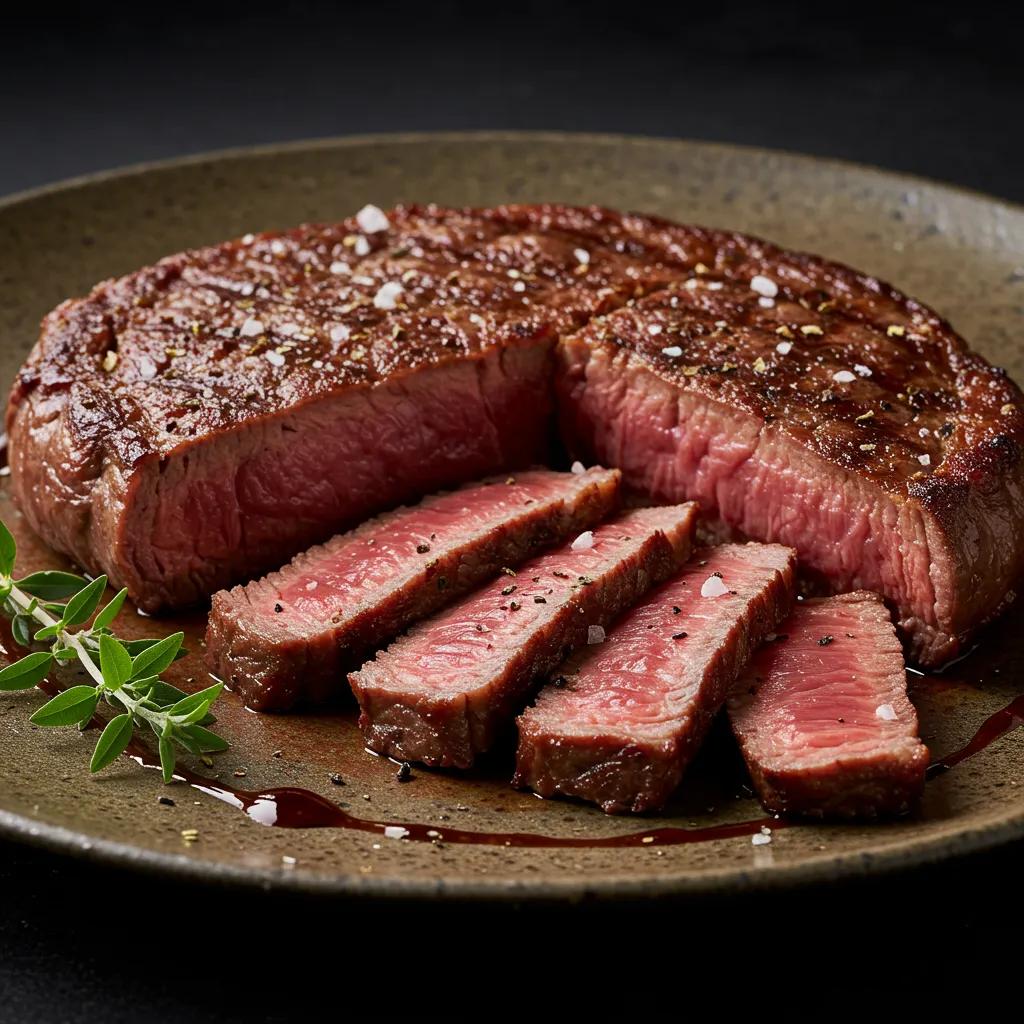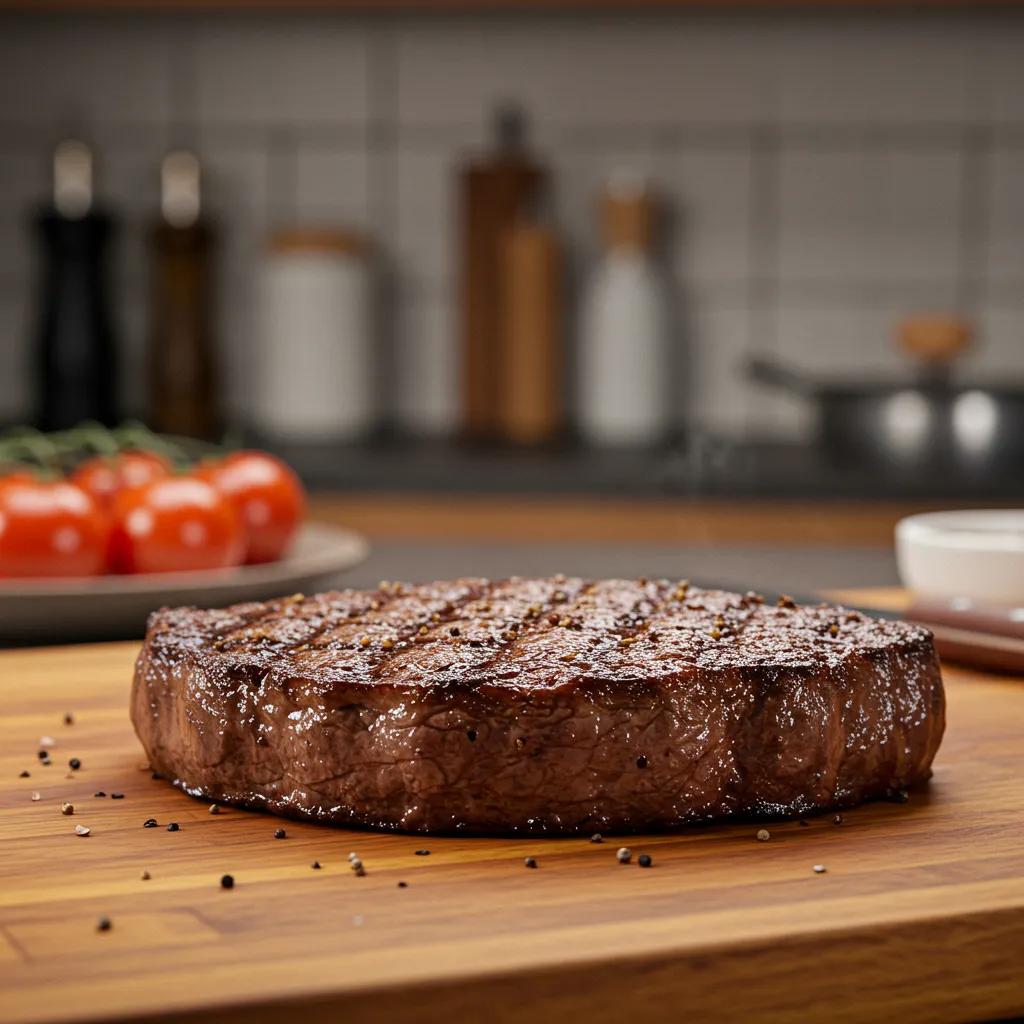How Long to Rest Steak for Maximum Flavor: The Essential Guide for Juicy, Tender Results
Resting steak is the simple finishing step that turns a good cook into a great one by letting heat and juices settle so each bite is tender and flavorful. This article explains what resting is, the science behind juice redistribution and carryover cooking, and exactly how long to rest steaks and roasts by cut and thickness so you get consistent results. You’ll learn practical, step-by-step techniques for tenting, using thermometers, and choosing resting surfaces, plus common mistakes to avoid when serving. The guide covers timing rules of thumb, minutes-per-inch examples, and tool recommendations so you can measure rather than guess. Read on for quick-reference tables, actionable lists, and tool comparisons that make resting steak straightforward whether you sear a 1-inch ribeye or pull a large prime rib roast.
Why Rest Steak After Cooking? Understanding the Benefits for Flavor and Juiciness
Resting steak is the brief pause after cooking when muscle fibers relax, juices redistribute, and internal temperatures experience carryover rise, producing juicier slices and more even doneness. This mechanism reduces juice loss when you cut and increases perceived tenderness because each bite contains moisture more evenly distributed across the muscle. Understanding this science clarifies why impatient slicing yields a dry plate while a short rest yields a more flavorful experience. Below is a compact summary of the key scientific factors and their effects to make the mechanics easy to scan.
What Happens to Steak When You Let It Rest?
When you remove steak from heat, exterior heat flows inward and the meat’s proteins relax, allowing juices to move outward toward cooler areas; this evens internal moisture and temperature. Carryover cooking continues to raise the steak’s internal temperature for several minutes based on thickness and mass, so planned carryover is essential to hit the target doneness. The outward movement of juices means a rested steak loses less fluid when sliced, so each bite tastes richer and the crust remains more intact. Understanding these dynamics helps you time the rest to balance temperature rise with moisture retention.
How Does Resting Improve Steak Tenderness and Flavor?

Resting increases tenderness because relaxed muscle fibers offer less resistance when chewed, and redistributed juices carry dissolved flavor compounds across the cut. Seasoning and fat render are also given a moment to settle into the meat, which improves perceived seasoning uniformity and mouthfeel. The result is consistent texture from edge to center and enhanced juiciness in every bite rather than concentrated moisture only at the center. These sensory improvements are the reason a short, intentional rest is standard practice in professional kitchens.
After understanding these benefits, the next practical question is how long to rest different cuts and sizes for reliable results.
How Long Should You Rest Steak? Timing Guidelines by Cut and Thickness
A simple rule of thumb is short steaks rest 5–10 minutes, while larger roasts rest 10–30 minutes depending on weight; thickness and bone-in status lengthen the rest. This section gives quick-reference timing by common steak types and a minutes-per-inch guideline so you can adapt for thickness and desired carryover. Use the table below to pick a starting point, then adjust for bone-in cuts and larger masses that trap heat and sustain carryover longer.
What Is the Ideal Resting Time for Different Steak Cuts?
Different cuts vary by density, fat content, and bone presence, so resting time reflects those properties: lean tenderloins need less time than dense roasts, and bone-in cuts require longer because bones hold heat. Use the short table above to select a baseline and then add a few minutes for bone-in or very fatty cuts that retain heat. When in doubt, err toward a slightly longer rest and keep the steak loosely tented over a warm surface to prevent cooling. For cut-specific techniques and recipes, consult trusted grilling guides that break down individual cuts in greater detail.
How Does Steak Thickness Affect Resting Time?
Thickness is the primary driver of carryover magnitude: each additional half-inch increases the time needed for internal temperature equilibration because more mass retains heat. A practical minutes-per-inch rule is roughly 5–7 minutes per inch for typical seared steaks, with thicker steaks trending toward 8–12 minutes per inch when bone-in or cooked to higher temperatures. Remember carryover typically adds about 3–10°F depending on thickness, so target your off-heat temp lower to hit the final desired doneness. These examples help you plan when to pull steaks for perfect final temperatures.
What Is the Best Way to Rest Steak? Step-by-Step Techniques for Perfect Results

A concise step-by-step routine guarantees consistent results: remove from heat, place on a warm surface or rack, tent loosely with foil, monitor temperature if precision matters, then slice against the grain. Below is a short exact-action list optimized for reliable resting performance, followed by a compact tool comparison table to help choose the right equipment.
- Remove from heat: Pull steak at 3–10°F below final target to allow carryover.
- Place on a warm surface: Use a warm cutting board or wire rack to avoid cold spots.
- Loosely tent with foil: Cover without sealing to retain heat and avoid steaming.
- Monitor internal temp: Check once or twice with a thermometer during rest.
- Slice against the grain: Cut after the recommended rest to lock in juices.
When selecting tools, an instant-read thermometer delivers fast accuracy for steaks, while a leave-in probe is ideal for roasts. For cooks using different grill types, note that high-heat searing—common on infrared grills—creates a thicker crust that benefits from a slightly longer rest to mellow the temperature gradient. Practical tool choices make resting predictable and repeatable.
How Do You Properly Tent Steak with Foil Without Losing Heat?
Proper tenting means draping foil loosely to create a shallow dome that traps radiant heat but allows steam to escape, preventing the crust from softening. Tight foil seals cause steaming that can ruin crust texture, while no cover on cold surfaces speeds cooling and increases drip loss. To tent correctly, fold a sheet into a loose dome leaving air gaps at the edges and avoid pressing foil to the meat. For longer rests, transfer to a warm-holding surface or low oven to maintain temperature without trapping moisture.
When and How Should You Use a Meat Thermometer During Resting?
Use a thermometer to account for carryover: check internal temperature immediately off heat and again midway through the rest to estimate rise. Instant-read models are perfect for quick verification, while leave-in probes provide continuous logging for larger roasts that change temperature slowly. Aim to remove steaks from heat a few degrees below final target—anticipating a 3–10°F rise—and confirm final temp before slicing. Accurate temperature monitoring prevents overcooking and ensures each steak reaches the intended doneness.
What Common Mistakes Should You Avoid When Resting Steak?
Common errors include cutting too soon, tenting too tightly, letting steak rest on a cold surface, or resting so long the crust cools and sogginess develops. Avoid these by following the timing rules, using a warm surface or rack, and tenting loosely to preserve crust while retaining heat. Below is a corrective checklist of pitfalls and fixes that help you preserve texture and temperature when finishing steaks.
- Cutting too soon: Wait the recommended minutes to prevent heavy juice loss.
- Tenting tightly: Keep foil loose to avoid steaming the crust.
- Resting on cold surfaces: Use a warm cutting board or rack to prevent rapid cooling.
- Over-resting without warmth: Use low-heat holding if rest must be extended.
Why Is Cutting Steak Too Soon a Problem?
Cutting a steak before fibers relax forces trapped juices out onto the plate, reducing per-bite moisture and leaving a drier texture. Early slicing also exaggerates temperature gradients, making the center appear overly moist while the edges dry out. The prevention is straightforward: let the steak rest the recommended time so juices redistribute and the final slice retains both moisture and flavor. This small patience investment produces dramatically better mouthfeel and presentation.
Can Resting Steak Too Long Affect Its Quality?
While resting is beneficial, excessively long rests on a cold surface cool the steak and soften the crust, and very long covered rests can concentrate seasoning or cause sogginess. If you must extend the hold, use a low oven or warm plate to preserve temperature and crispness without oversteaming. Practical maximum windows depend on cut and context, but for most steaks avoid rests longer than 30 minutes unless warm-holding methods are used. These trade-offs help you balance temperature stability with texture retention.
For further reading on cut-specific techniques and recommended equipment, BBQ Host offers in-depth steak guides and gear reviews that cover ribeye and filet-mignon preparation, thermometer recommendations, and grilling equipment comparisons to help you apply these resting principles consistently.

